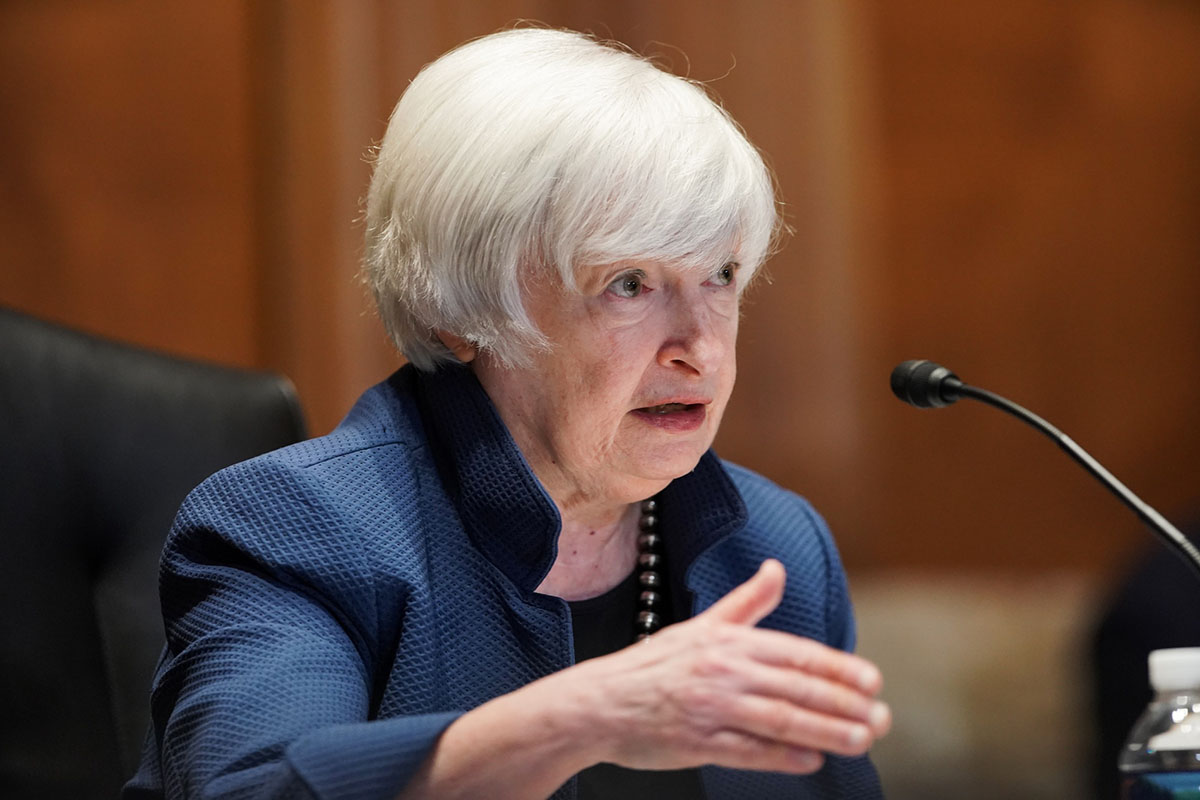

Finance
How To Compute Market Liquidity
Published: February 23, 2024
Learn how to compute market liquidity in the finance sector with our comprehensive guide. Understand the key metrics and strategies for analyzing liquidity.
(Many of the links in this article redirect to a specific reviewed product. Your purchase of these products through affiliate links helps to generate commission for LiveWell, at no extra cost. Learn more)
Table of Contents
Introduction
Welcome to the dynamic world of market liquidity! In this article, we will delve into the intricacies of market liquidity, exploring its definition, importance, factors affecting it, and methods for computing it. Whether you are a seasoned investor, a budding finance enthusiast, or simply intrigued by the complexities of the financial realm, understanding market liquidity is pivotal for navigating the ebbs and flows of the market.
Liquidity, in the context of financial markets, is a fundamental concept that influences the ease and efficiency of trading assets. It encompasses the ability to swiftly buy or sell an asset without causing a significant impact on its price. Essentially, market liquidity reflects the degree to which assets can be converted into cash or traded without causing a substantial shift in their value.
As we embark on this exploration, we will unravel the multifaceted nature of market liquidity, shedding light on its significance in investment strategies, risk management, and overall market stability. Furthermore, we will dissect the various factors that can sway market liquidity, ranging from market conditions and regulatory policies to investor behavior and economic indicators.
By the end of this journey, you will gain a comprehensive understanding of how market liquidity influences the financial landscape and how it can be computed to gauge the health and vitality of a market. So, fasten your seatbelts as we embark on a captivating expedition into the realm of market liquidity!
Definition of Market Liquidity
Market liquidity encapsulates the ease with which assets can be bought or sold in a market without significantly impacting their prices. It serves as a measure of the market’s ability to accommodate large volumes of trading activities without causing substantial price fluctuations. Essentially, a liquid market facilitates seamless transactions, allowing investors to swiftly enter or exit positions with minimal impact on asset prices.
One of the key indicators of market liquidity is the bid-ask spread, which represents the difference between the highest price a buyer is willing to pay (bid) and the lowest price a seller is willing to accept (ask). A narrow bid-ask spread typically indicates high liquidity, as it implies that there is minimal disparity between the prices at which buyers are willing to purchase and sellers are willing to sell an asset.
Liquidity can also be assessed through metrics such as trading volume, depth of market, and market impact. Trading volume reflects the total number of shares or contracts traded within a specified period, providing insights into the level of market activity. Depth of market pertains to the quantity of buy and sell orders at varying prices, indicating the extent to which a market can accommodate large orders without significantly impacting prices. Market impact measures the effect of a transaction on the price of an asset, with lower market impact indicative of higher liquidity.
Furthermore, market liquidity is not limited to traditional assets such as stocks and bonds; it extends to various financial instruments, including options, futures, and foreign exchange. The degree of liquidity can vary across different asset classes and is influenced by factors such as market conditions, trading hours, and the presence of market makers and institutional investors.
Understanding the nuances of market liquidity is crucial for investors, as it directly impacts the efficiency and cost of executing trades. In liquid markets, investors can readily buy or sell assets at competitive prices, whereas illiquid markets may pose challenges in executing trades without exerting significant influence on prices.
As we unravel the layers of market liquidity, it becomes evident that this concept forms the bedrock of efficient and vibrant financial markets, playing a pivotal role in shaping investment strategies and market dynamics.
Importance of Market Liquidity
Market liquidity holds immense significance in the realm of finance and investment, exerting a profound impact on market efficiency, price discovery, and overall financial stability. Understanding the importance of market liquidity is crucial for investors, financial institutions, and policymakers, as it underpins the smooth functioning of financial markets and influences investment decision-making processes.
One of the primary benefits of robust market liquidity is the facilitation of seamless transactions. In liquid markets, investors can readily buy or sell assets without incurring substantial price slippage, thereby enhancing the efficiency of trading activities. This ease of transaction is particularly advantageous for institutional investors and fund managers who deal with large volumes of assets and seek to execute trades without significantly impacting market prices.
Furthermore, market liquidity plays a pivotal role in price discovery, which refers to the process of determining the fair value of assets based on supply and demand dynamics. In liquid markets, the convergence of diverse buy and sell orders contributes to efficient price discovery, enabling market participants to obtain accurate and timely information about asset valuations. This transparency in pricing fosters market efficiency and instills confidence among investors, ultimately contributing to the overall health of the financial ecosystem.
Additionally, market liquidity enhances market resilience and stability, especially during periods of economic uncertainty or market stress. A liquid market is better equipped to absorb sudden surges in trading activity or unforeseen events, as the presence of ample buyers and sellers mitigates the likelihood of extreme price fluctuations. This resilience is instrumental in maintaining investor confidence and preventing disorderly market conditions, thereby bolstering the stability of the financial system.
Moreover, market liquidity influences the cost of capital and borrowing for businesses and governments. In liquid markets, entities can raise capital at competitive rates, as there is a broad investor base willing to participate in debt and equity offerings. This accessibility to capital at favorable terms fosters economic growth and investment, driving innovation and expansion across various sectors.
By recognizing the pivotal role of market liquidity in fostering efficiency, transparency, and stability within financial markets, stakeholders can make informed decisions and formulate strategies that align with the dynamics of liquidity. As we navigate the intricacies of market liquidity, its profound impact on investment performance and market functionality becomes increasingly apparent, underscoring its indispensable role in the global financial landscape.
Factors Affecting Market Liquidity
Market liquidity is influenced by a myriad of factors that collectively shape the ease and efficiency of trading activities within financial markets. Understanding these factors is essential for investors, traders, and financial institutions, as they directly impact the dynamics of liquidity and the execution of investment strategies.
1. Asset Class: Different asset classes exhibit varying degrees of liquidity. For instance, major stock indices and highly traded currency pairs in the foreign exchange market tend to be more liquid compared to less commonly traded stocks or exotic currency pairs. The liquidity of assets is influenced by factors such as market depth, trading volume, and the presence of market makers.
2. Market Conditions: Market liquidity can fluctuate in response to prevailing market conditions. During periods of heightened volatility or economic uncertainty, liquidity may diminish as market participants become more cautious, leading to wider bid-ask spreads and reduced trading volumes. Conversely, stable market conditions often foster higher levels of liquidity, as investor confidence and trading activity tend to be more robust.
3. Regulatory Policies: Regulatory frameworks and policies implemented by governing bodies can impact market liquidity. For example, the imposition of trading restrictions, circuit breakers, or transaction taxes may influence the behavior of market participants and the overall liquidity of the market. Additionally, regulatory changes aimed at enhancing transparency and investor protection can contribute to the resilience and attractiveness of a market.
4. Investor Behavior: The actions and behavior of investors play a significant role in shaping market liquidity. Large institutional investors and market makers can impact liquidity through their trading activities, particularly in less liquid markets where their participation carries substantial influence. Moreover, shifts in investor sentiment and risk appetite can influence trading volumes and the depth of market, thereby affecting liquidity levels.
5. Economic Indicators: Macroeconomic factors and economic indicators can exert influence on market liquidity. For instance, changes in interest rates, inflation expectations, and GDP growth can impact investor confidence and trading patterns, subsequently influencing market liquidity. Additionally, geopolitical events and global economic trends can contribute to fluctuations in liquidity across different markets.
By comprehending the multifaceted nature of these factors, market participants can adapt their strategies and risk management approaches to navigate the evolving landscape of market liquidity. Recognizing the interplay between asset characteristics, market dynamics, regulatory frameworks, investor behavior, and economic factors is imperative for gauging and responding to changes in market liquidity, thereby enhancing the resilience and efficacy of investment activities.
Methods for Computing Market Liquidity
Assessing market liquidity is essential for investors and financial professionals seeking to gauge the ease of trading assets and the potential impact on prices. Various methods and metrics are employed to compute market liquidity, providing valuable insights into the depth and efficiency of a market. These methodologies enable market participants to make informed decisions and manage risks effectively.
1. Bid-Ask Spread: The bid-ask spread serves as a fundamental indicator of market liquidity. It represents the difference between the highest price a buyer is willing to pay and the lowest price a seller is willing to accept for an asset. A narrow bid-ask spread typically indicates higher liquidity, as it implies that there is minimal disparity between buying and selling prices, facilitating smoother transactions.
2. Trading Volume: The total volume of shares or contracts traded within a specified period is a key metric for evaluating market liquidity. Higher trading volumes generally indicate greater liquidity, as they reflect robust market activity and the ease of executing trades without significantly impacting prices. Monitoring trading volumes provides insights into the level of market participation and the depth of liquidity.
3. Market Depth: Market depth refers to the quantity of buy and sell orders at varying prices for a particular asset. Depth of market data provides visibility into the availability of liquidity at different price levels, offering valuable information about the resilience of the market to absorb large orders without causing substantial price movements. Deeper market depth signifies greater liquidity and the ability to accommodate sizable trades.
4. Price Impact: Assessing the price impact of transactions on asset prices is crucial for understanding market liquidity. Lower price impact indicates higher liquidity, as it suggests that trades can be executed without exerting significant influence on market prices. Measuring the market impact of trades enables investors to assess the potential slippage and cost of executing orders in relation to market liquidity.
5. Market Microstructure Analysis: Market microstructure analysis involves examining the intricacies of order flow, trade execution, and market participant behavior to assess liquidity dynamics. This approach delves into the granular details of market interactions, order book dynamics, and trade execution patterns to gain insights into liquidity provision and market resilience.
6. Liquidity Ratios: Various liquidity ratios, such as the bid-ask spread ratio and the turnover ratio, are utilized to quantify market liquidity. These ratios provide standardized measures that enable comparisons across different assets and markets, offering a quantitative assessment of liquidity levels and trading efficiency.
By leveraging these methods and metrics, market participants can gain a comprehensive understanding of market liquidity and adapt their investment strategies and risk management approaches accordingly. The ability to compute and interpret market liquidity empowers investors to navigate diverse market conditions, optimize trade execution, and make informed decisions that align with the dynamics of liquidity.
Conclusion
Embarking on a journey through the intricacies of market liquidity has unveiled the pivotal role of this concept in shaping the dynamics of financial markets. From its fundamental definition as a measure of trading efficiency to its profound impact on price discovery, market resilience, and investment strategies, liquidity stands as a cornerstone of the global financial landscape.
Recognizing the importance of market liquidity is paramount for investors, financial institutions, and policymakers, as it underpins the efficiency and stability of market operations. The ability to swiftly buy or sell assets without causing substantial price fluctuations fosters transparency, confidence, and vibrant market activity, ultimately contributing to the resilience and attractiveness of financial markets.
Moreover, comprehending the diverse factors that influence market liquidity, ranging from asset characteristics and market conditions to regulatory policies and investor behavior, enables market participants to adapt their approaches and strategies in response to evolving liquidity dynamics. By staying attuned to these factors, investors can navigate the ever-changing landscape of market liquidity with agility and foresight.
As we conclude this exploration, it is evident that the methods for computing market liquidity, encompassing bid-ask spreads, trading volumes, market depth, price impact analysis, and liquidity ratios, provide invaluable tools for assessing and interpreting liquidity levels. These methodologies empower investors to make informed decisions, optimize trade execution, and manage risks effectively within the context of market liquidity.
In essence, market liquidity serves as a barometer of market health and functionality, reflecting the vibrancy and resilience of financial markets. Its influence permeates investment strategies, risk management practices, and the overall stability of the financial ecosystem, underscoring its indispensable role in the realm of finance.
As we continue to navigate the ever-evolving landscape of financial markets, the profound impact of market liquidity remains a guiding force, shaping the efficiency, transparency, and vibrancy of market operations. Embracing the complexities of market liquidity equips market participants with the insights and tools needed to thrive in the dynamic world of finance, fostering resilience and innovation within the global financial ecosystem.














